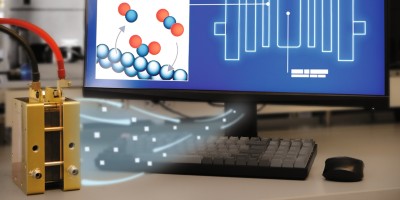A self-driving lab, called Fast-Cat, is developed for the rapid, autonomous Pareto-front mapping of homogeneous catalysts in high-pressure, high-temperature gas–liquid reactions. The efficacy of Fast-Cat was demonstrated in performing Pareto-front mappings of phosphorus-based ligands for the hydroformylation of olefins.

References
Coley, C. W. et al. A robotic platform for flow synthesis of organic compounds informed by AI planning. Science 365, eaax1566 (2019). This paper reports an artificial intelligence (AI)-guided retrosynthesis coupled with a robotically reconfigurable flow system.
Slattery, A. et al. Automated self-optimization, intensification, and scale-up of photocatalysis in flow. Science 383, eadj1817 (2024). This paper reports a closed-loop automated optimization of photocatalysis in flow.
Abolhasani, M. & Kumacheva, E. The rise of self-driving labs in chemical and materials sciences. Nat. Synth. 2, 483–492 (2023). A review article that presents advances in the field of self-driving labs.
Bennett, J. A. & Abolhasani, M. Autonomous chemical science and engineering enabled by self-driving laboratories. Curr. Opin. Chem. Eng. 36, 100831 (2022). A review article that presents various methods and applications of self-driving labs.
Daulton, S. et al. Differentiable expected hypervolume improvement for parallel multi-objective Bayesian optimization. Adv. Neural Inf. Process. Syst. 33, 9851–9864 (2020). This paper reports a multi-objective Bayesian optimization algorithm for maximizing the observed objective space.
Additional information
Publisher’s note Springer Nature remains neutral with regard to jurisdictional claims in published maps and institutional affiliations.
This is a summary of: Bennett, J. A. et al. Autonomous reaction Pareto-front mapping with a self-driving catalysis laboratory. Nat. Chem. Eng. https://doi.org/10.1038/s44286-024-00033-5 (2024).
Rights and permissions
About this article
Cite this article
A self-driving lab for accelerated catalyst development. Nat Chem Eng 1, 206–207 (2024). https://doi.org/10.1038/s44286-024-00043-3
Published:
Issue Date:
DOI: https://doi.org/10.1038/s44286-024-00043-3
- Springer Nature America, Inc.


